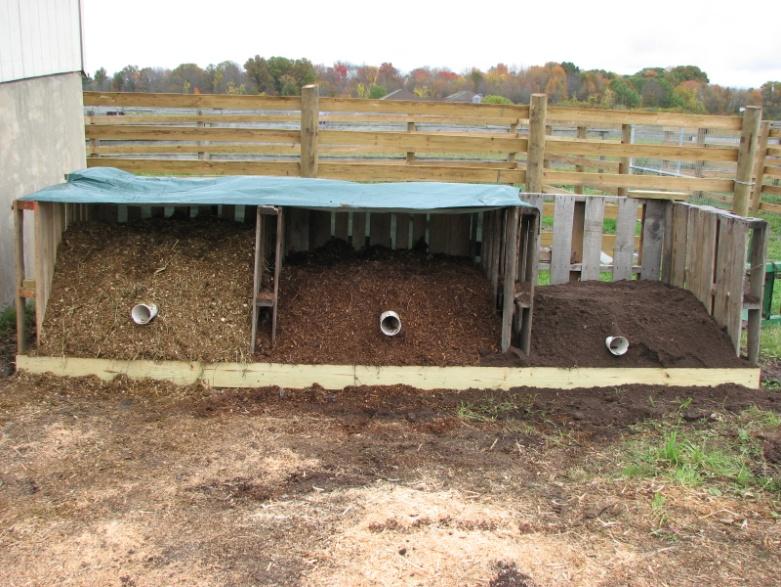Let's Speed Up That Compost Pile
Tuesday, March 13, 2018
Edit

Image source: https://ag.umass.edu/sites/ag.umass.edu/files/fact-sheets/images/CompostingHorseManure.jpg
There are other things we can do to accelerate composting and make it more efficient. As slightly wet leaves decompose quicker than dry ones and rain may not penetrate the pile center, I'd dampen dry leaves before adding them. Ground limestone may also be scattered in if we add a bunch of oak leaves and we're concerned about the acidity they may generate in our pile. Scatter about a pound of lime for every five leaf layers. But do not use lime if your compost will be given to acid loving plants such as mountain laurel, blueberries, azaleas, rhododendrons and potatoes. Adding lime to compost is an option rather than mandatory.
The addition of fertilizers speeds composting. Scatter 1 cup of fertilizer for every 15 square feet of pile.
Two pounds of dried cow manure can be the fertilizer. The addition of fertilizer is not a necessity.
Shady piles seem to compost faster than sunny ones, as they more promptly retain the moisture microbes need. Drenching a dry pile with water can be helpful in hot weather. Construct your pile lower in the center and higher on the sides, that way rain will go in more easily. Covering the pile with plastic sheets to reduce evaporation can help in conserving that most important water supply. Turning the pile every month with a garden fork or similar tool aerates our microbes and speeds composting.
Garden waste material and vegetable scraps make great compost additions, but don't place meat, bones, glass, plastic or metal in the pile. Keep material loaded with weed seeds, plant disease or insects out of the pile. Never put in material that's been treated with herbicide. Straw or hay can be added, but seeds in the hay may not decompose, sometimes causing weed troubles. Pine needles may be added, but because of their waxy coatings, they may take longer to break down. If you add twigs make sure they are small and broken, or they will take forever to break down. If you add newspaper they need to be shredded into tiny strips. Choose an inconspicuous site for the pile. While piles aren't ugly, they are seldom beautiful.
Compost has so many garden uses that I never get enough of this terrific stuff. I blend compost into every planting hole, whether I'm planting a dogwood tree, petunia beds, tomatoes or anything else.